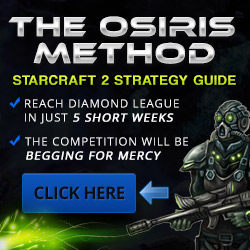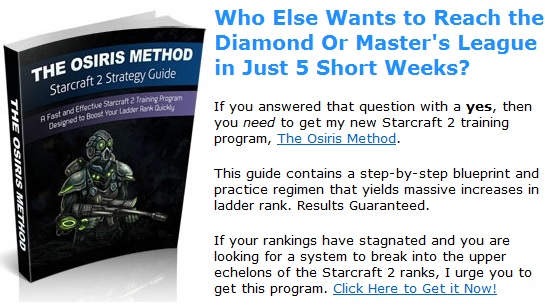Starcraft 2 Zerg Strategy - HotS UpdatedHome --> Zerg Guide --> Zerg Strategy (you are here)
The Table of Contents below provides you with a quick link to the sections of this strategy page. Additionally, you will find links to full guides detailing the strategies for each race match-up. There are separate pages for each match, as some Zerg vs Protoss strategies do not apply to Zerg vs Terran match-ups (and vice versa). Table of Contents General Zerg Strategies Click any of the links above to jump to the section dedicated to that particular aspect of Zerg strategy. General Zerg StrategiesAs a Zerg player, there are some aspects of Zerg strategy that you must understand if you want to have any degree of success with Zerg in ranked matches. Below, we will go over these essential strategies. Additionally in this section you will find some unique Zerg strategies that can be effective all 3 of the races. Injecting Larva and Spreading Creep The Queen's Inject Larva ability is crucial to your success as Zerg. If you do not Inject Larva every 40 seconds like clockwork, you will never rise very high as a Zerg player. This is especially important in the early stages of the game, as extra Larva production early means extra Drone production which means a much more robust economy early on in the game. This compounds all game, so if you are behind, you will not do well as Zerg.
While spreading the creep is not as important as regularly injecting larva, spreading the creep is still important and is something overlooked by lesser Zerg players. Zerg ground units move noticeably faster on the creep, so spreading the creep makes it much easier for Zerg units to get in position to defend drops and helps new units reinforce your main army faster. Creep spread also provides vision for the Zerg player. Creep spreads faster when multiple Creep Tumors are occupying the same area. Players often use 2-3 Queens to drop Creep Tumors because of this fact. Rather than just spread Creep with a single Creep Tumor, 2-3 Creep Tumors can be dropped in every 40 seconds to spread the creep very quickly. Dealing With Zerg Cost Inefficiency Zerg units are typically not as cost efficient as enemy units from both a supply and a resource perspective. Banelings and Mutalisks for example are very effective but also require a lot of resources to make in large numbers. More efficient units like the Roach do not cost as many resources, but take up a lot of supply relative to their strength. Zerg pros often win games despite being behind on the units lost tab at the start of a crucial battle. They win these games by having larger armies, bigger economies, and better re-macroing capacity. Here is a little info on each:
Going for Hatchery First Since Zerg players need big economies and Hatcheries double as production facilities, it very common for Zerg players to build a Hatchery at their natural expansion as their first structure. Zerg players going for a fast Hatchery will add on a single Overlord as they work up to 15 or 16 Drones before plopping down a Hatchery. The downside to this approach is that it is vulnerable to cheesy early-game rushes like proxy Barracks, Gateways, or 6-10 Pools. On small 2-player maps, even the most economic Zerg players will get down their Spawning Pool before their Hatchery just to be safe. Taking Three Fast Expansions An extension of the Hatchery first build is for Zerg players to go for a fast third Hatchery. This can come down immediately after or even immediately before the Spawning Pool. Vespene gas intake can be delayed to allow the third to come down sooner. No matter what map this strategy is used on, it is a bit of a risk. However, if the enemy does not scout this build within the first 6 minutes of the game, the Zerg player can easily establish this expansion and take a sizable economic lead going into the mid-game. Many players believe that the occasional loss to an early attack is worth the lead that a fast third base can provide. Since Hatcheries are also needed as production facilities, sometimes a fast third base for the Zerg is not an economic move. The Zerg player could decide not to produce Drones at this location and instead use the Larva to make a sudden swell of Roaches or Zerglings and then make an attack. This works well when the opponent goes for a quick third base of their own. The Zergling Rush Going for a fast Spawning Pool and then producing Zerglings for a quick rush is known as the Zergling rush. The number of Drones the Zerg player has at the time they construct their Spawning Pool denotes the style of Zergling rush. For example, a "6 Pool" refers to building no additional Drones before adding your Spawning Pool whereas a "10 Pool" means the Zerg built 4 Drones before dropping their Spawning Pool. Going for Zergling rushes is often looked down upon and considered to be cheese. Zergling rushes have a high chance of backfiring, resulting in a loss for the Zerg player. Due to the low win percentage rate, Zergling rushes can be considered to be cheese. Sometimes they are indeed cheesy, but sometimes they are a valid strategy. Here is the difference:
Fast Unit Transitions Banked up Larva and resources can allow you not only to re-macro quickly but can allow you to re-macro with an entirely different army composition. For example, imagine a Zerg vs Terran match-up, where the Zerg player rapidly changes between 3 different army compositions in a very short time:
Swarm Host Colonies One bonus strategy I wanted to discuss was the Swarm Host colony. This refers to establishing creep spread outside the opponent's base, adding in Swarm Hosts, sieging the enemy's base with Locusts, and protecting the Swarm Hosts with Queens and automated defense. The Creep is spread so that the Queens can move quickly around the creep and so that you can place Spore Crawlers to defend the Swarm Hosts. Here is how to pull it off:
Zerg vs Protoss StrategyFull Guide: Zerg vs Protoss Strategy Zerg players tend to be very economically aggressive against Protoss players. Since Protoss players typically go for a quick expansion against Zerg players, Zerg players often take a quick third against Protoss. The Zerg player knows a Protoss player cannot make an early attack and take their expansion, so even if the Protoss rushes to Warpgate tech, the Zerg can just use their third base for unit production if needed. Some Protoss players have taken to opening with a Gateway before an expansion. Be careful when going against these players as players who opt for a Gateway before an expansion are much more capable of making an attack, particularly an attack that features Phoenix or Void Rays. In order to buck the trend, it can be wise for the Zerg player to opt vespene gas and a Spawning Pool before their expansion. This gives the Zerg quick access to Metabolic Boost. Protoss players who go for Gateways instead of a Forge with a Photon Cannon are very vulnerable to mass Zerglings. They cannot defend their buildings against a pack of 24-36 Zerglings without a Photon Cannon in front. In the mid to late game, Zerg players try to keep a large economic lead and use this to produce units that are strong against the current Protoss composition. Zerg players often must trade armies with the Protoss and destroy the Protoss player on the follow-up reinforcement wave rather than with their initial force. Zerg vs Terran StrategyFull Guide: Zerg vs Terran Strategy Zerg players typically still opt for a quick expansion against Terran. Zerg players do however like to get Metabolic Boost fairly early against Terran players in order to stop Hellions and Reapers which could otherwise pin the Zerg inside their own base(s). Zerglings with Metabolic Boost are fast enough to chase down and surround both enemy Reapers and Hellions. Queens are needed to shut down early drop attacks - use the Queens to focus-fire down enemy Medivacs. A Spore Crawler at each base goes a long way as well to stopping Medivacs. In the mid-game, Zerg players have a variety of viable unit compositions. The way the Zerg engages the opponent's army is often more important than its actual unit composition. For example, Zerg players using Zerglings, Banelings, and Mutalisks cannot simply attack-move towards an opponent's Marine and Siege Tank army. Instead, Banelings need to focus on Marines, Zerglings need to flank Siege Tanks and pick off reinforcements, while Mutalisks need to avoid enemy Marines and focus down vulnerable Siege Tanks and Medivacs.Late game transitions into air or Ultralisks are both very effective. Zerg players need to be cost efficient and have multiple bases in order to bank up enough resources to make these transitions happen. Zerg players often take 5th and 6th expansions where only gas is harvested to help fill the demand for large amounts of vespene. Zerg vs Zerg StrategyFull Guide: Zerg vs Zerg Strategy Zerg players are most vulnerable in the early game versus other Zerg players. Six Pools and 10 Pools are common on two player maps. Be wary of Hatchery-first builds on maps where a 10 Pool can arrive early. On larger maps however, a Hatchery first build can be prudent, as establishing the Hatchery sooner provides creep for a Spine Crawler and doubles Queen production potential. Many Zerg games end early due to early Zergling, Baneling, and Roach attacks. Against enemy Banelings, use single Zerglings to pick them off one at a time. Do not let enemy Banelings hit multiple Drones or Zerglings with one explosion or you can quickly be overrun by the enemy's own units. Once you get a large number of Roaches, Banelings lose some of their appeal but still can be used to destroy Drones. Later in the game, Zerg players typically go for Roaches and Hydralisks or Mutalisks and Zerglings. The Roach and Hydralisk build is much easier to use, but requires careful planning and automated defense in order to pull off successfully. Swarm Hosts and Infestors make good support units for Roaches and Hydralisks as well. Locusts move faster on enemy creep as well as your own, so Swarm Hosts have a huge range in ZvZ. Zerglings and Mutalisks can be used to gain map control in order to get an economic lead. In a mirror match up, a big economic lead almost always translates into a win since both player are using the same units. Be careful not to neglect Zerglings when going for Mutalisks. Mutalisks cost a lot of gas, so you might as well make Zerglings (and use them) to spend your excess minerals. In the late game, the Ultralisk and Brood Lord are hard to stop. Ultralisks have so much health and armor that they can ignore Mutalisks for a long period of time and take out several bases worth of buildings and workers before Mutalisks can actually take out the Ultralisks. Additional Zerg StrategiesOver time, we will be adding more and more strategies to this Zerg strategy page. Be sure to check back regularly for strategy updates and new Starcraft Zerg tactics! |
Don't be shy - share this page on G+ and Twitter!
Sign up for my Free Starcraft 2 Mini-Course where I reveal my best strategies not seen anywhere on this site!
Starcraft 2 Strategy Guide Privacy Policy Contact Us Disclaimer
©2013 www.osirissc2guide.com

